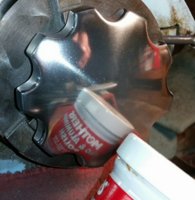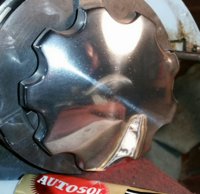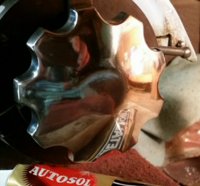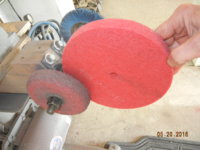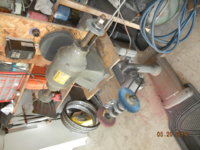DrewMartin
Old fashioned new guy
2M, that looks great!
One suggestion is to spend a little more time on the nubs, 100% by hand. I didn't want to scare you off with my process but it's very similar to NONClow's. The intermittent polishing on the lathe of the nubs will cause your abrasives to bounce off the surface and lead to a lower luster in this area.
My final cream polish of choice is Mother's Mag and Aluminum. I even use this stuff to do a final polish on plastics with great results.
The return of cloudiness is definitely a sign that the Blue Magic has coarser abrasives than your autosols.
If it wasn't suspected to be a fairly hard, high silicon alloy I would suggest using a hardwood to burnish the surface to see if you could push the material around enough to fill the voids.
*edit*
If we're bragging on our own polishing and sharing results...

One suggestion is to spend a little more time on the nubs, 100% by hand. I didn't want to scare you off with my process but it's very similar to NONClow's. The intermittent polishing on the lathe of the nubs will cause your abrasives to bounce off the surface and lead to a lower luster in this area.
My final cream polish of choice is Mother's Mag and Aluminum. I even use this stuff to do a final polish on plastics with great results.
The return of cloudiness is definitely a sign that the Blue Magic has coarser abrasives than your autosols.
If it wasn't suspected to be a fairly hard, high silicon alloy I would suggest using a hardwood to burnish the surface to see if you could push the material around enough to fill the voids.
*edit*
If we're bragging on our own polishing and sharing results...

